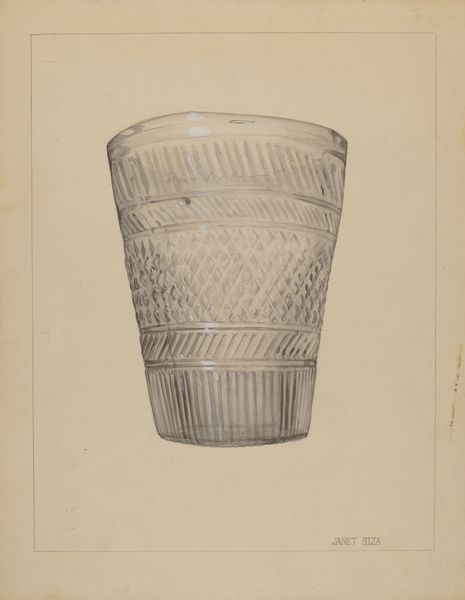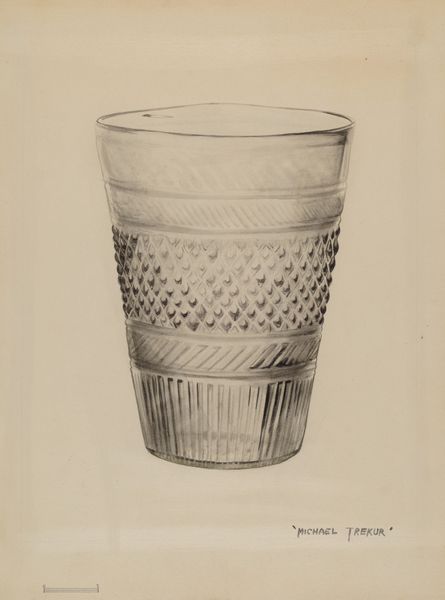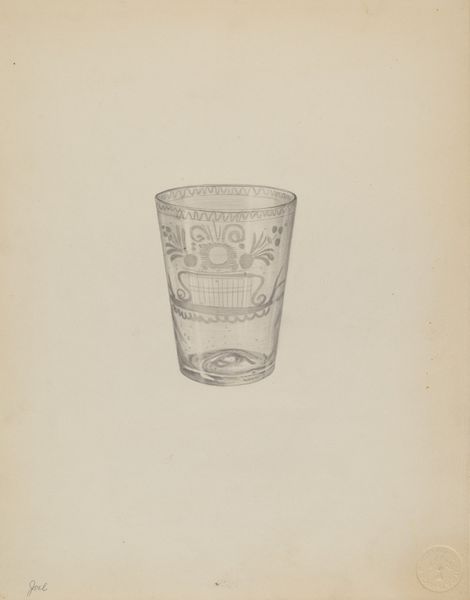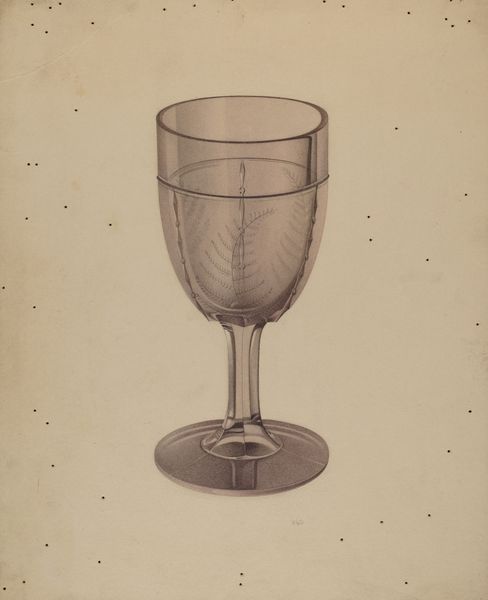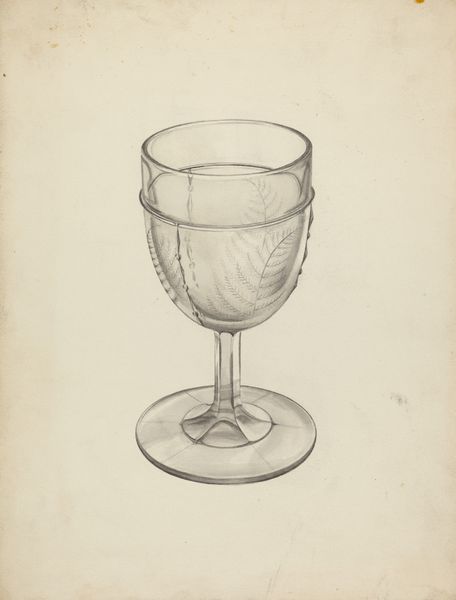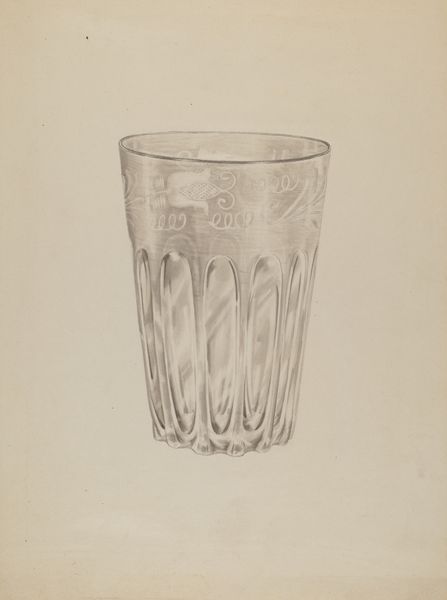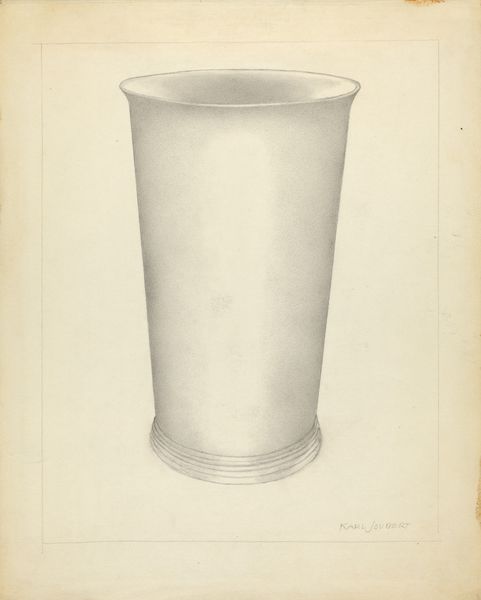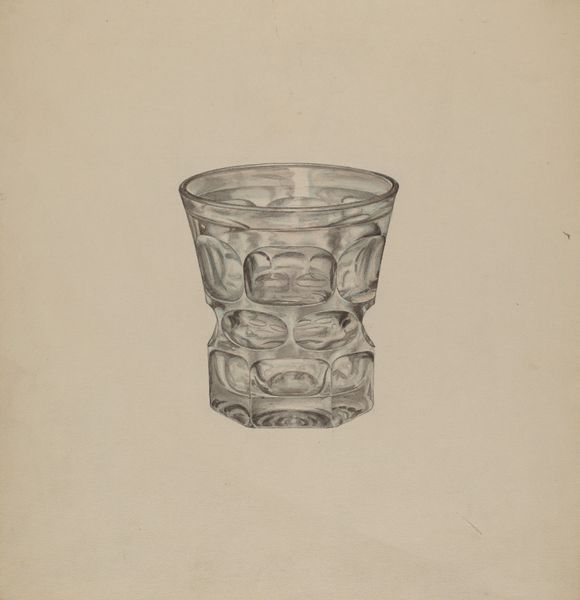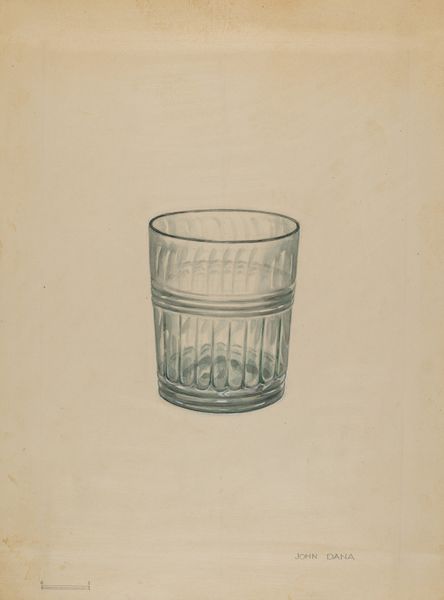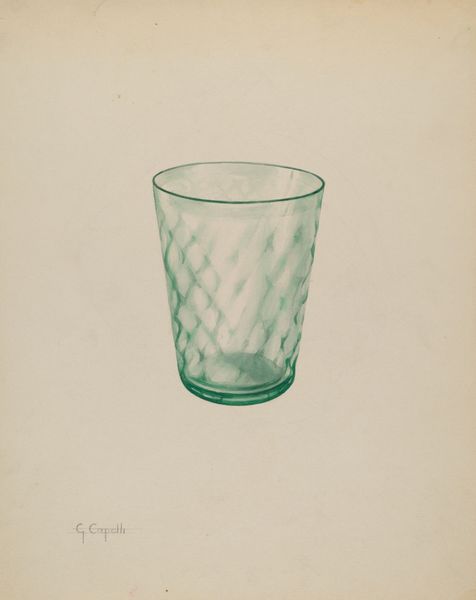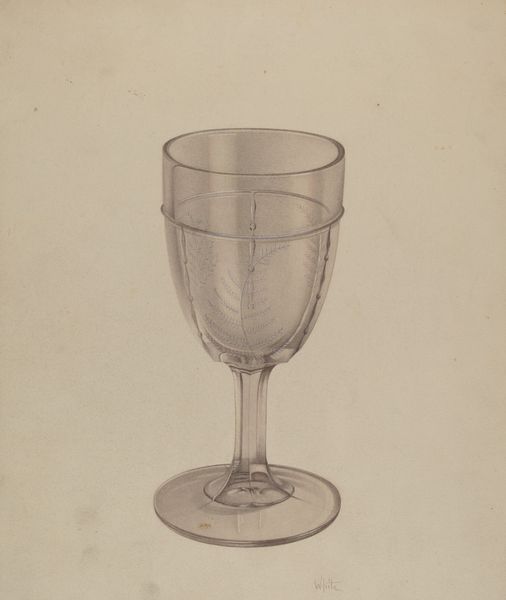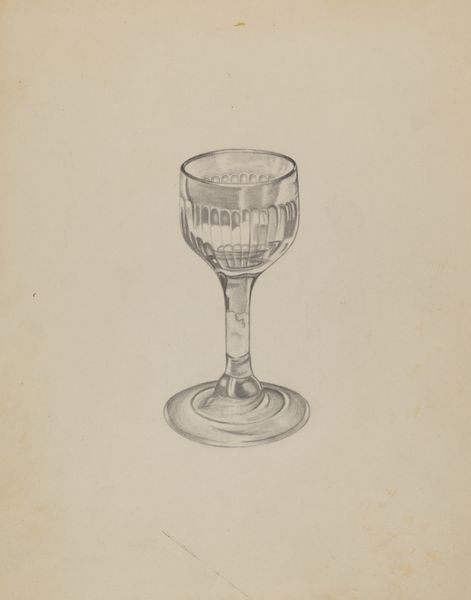
drawing, pencil
#
pencil drawn
#
drawing
#
pencil sketch
#
charcoal drawing
#
pencil drawing
#
pencil
#
pencil work
#
realism
Dimensions: overall: 35.3 x 24.5 cm (13 7/8 x 9 5/8 in.)
Copyright: National Gallery of Art: CC0 1.0
Editor: Here we have Raymond Neumann’s “Flip Glass,” created around 1940, using pencil on paper. It’s so meticulously rendered. I’m immediately struck by the way the artist captured the texture of the glass and the intricate patterns. How do you interpret this work from a purely formal standpoint? Curator: The drawing presents an intriguing study in value and line. Observe how Neumann uses variations in pencil pressure to articulate the play of light across the glass surface. The composition is centrally focused, encouraging the eye to dissect each geometric band individually before grasping their collective arrangement. Editor: So, the way the light and shadow interact is key to understanding it? Curator: Precisely. The contrast isn’t particularly strong, generating a softness, yet the patterns hold distinct clarity. This careful balancing act yields the volume of the form while retaining a two-dimensional understanding. The lines remain somewhat loose and gestural, providing visual delight upon closer scrutiny. Editor: Do you think the restricted tonal range enhances the observation of detail? Curator: It forces us to concentrate on textural qualities—how did the artist create the effects and capture such intricate designs without strong delineation? Consider the implications of material on form here; this attention results in hyperrealism. Editor: It's amazing to think about how much you can understand about the artistic skill based solely on composition. Thanks for offering a fresh perspective on Neumann's drawing. Curator: Indeed. Examining the object in isolation yields compelling conclusions, specifically its visual dynamics and technical applications.
Comments
No comments
Be the first to comment and join the conversation on the ultimate creative platform.
